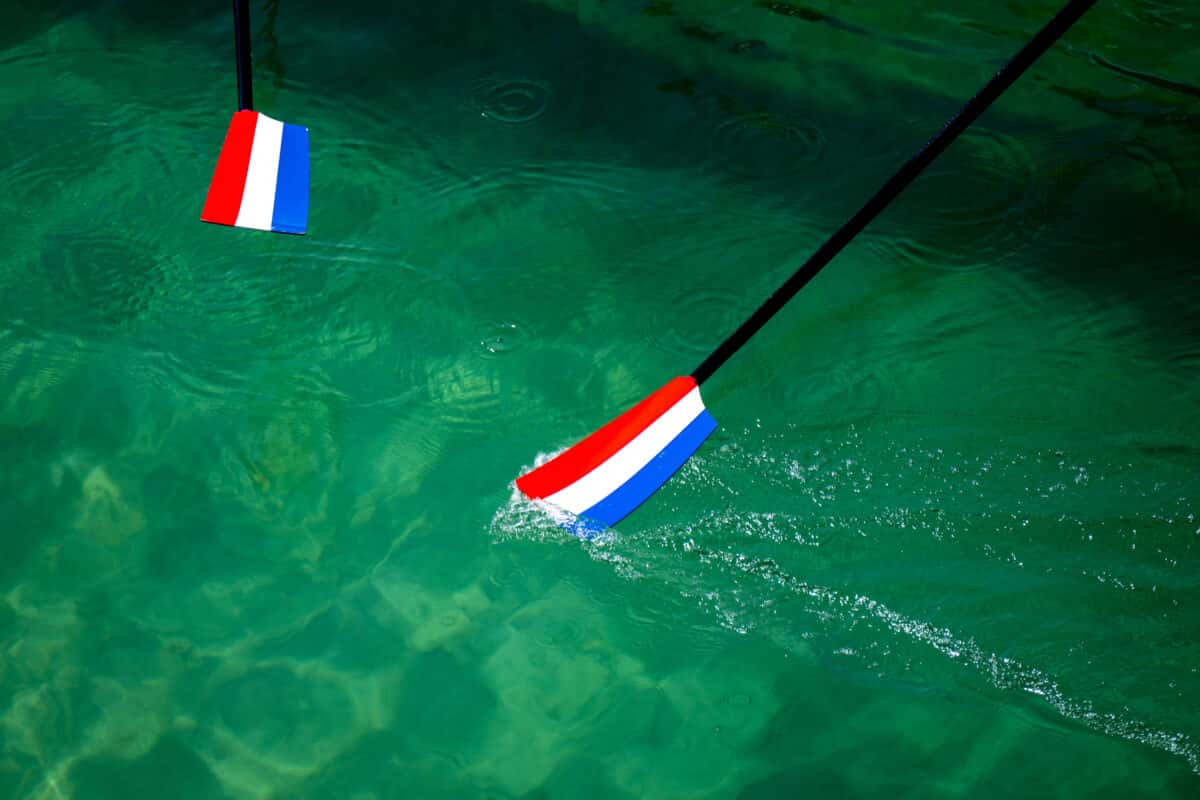
23 Aug 2022
Defining Rowing: Oars and Blades
With the international racing circuit once again rowing on smooth water after some rough patches these past few years, World Rowing hopes to help spectators and athletes alike brush up on some of the sport’s most used but least understood words and phrases.
In this first article, we begin with a look at two of rowing’s most familiar terms: “oar” and “blade”. We also address the vexing question of whether an oar is a paddle and explain why a rowing blade is not like a knife.
OAR
Meaning:
In rowing, the word “oar” means the long lever used to propel a boat through the water. “Oar” can also mean a rower, the actual person using an oar, just like a sailor on a ship can be called a “hand”. The word “oarsman” has historically been used in the same way, with “oarswoman” sometimes used for female rowers. “Oarsperson” is a neutral alternative.
History:
In English, the word “oar” has remained almost the same since its first use as “ar” to mean a paddle used for rowing a boat over 800 years ago. The word is related to the Danish and Swedish words for oar, “aare” and “åra”.
Oar vs. paddle:
For some rowers, the question of whether an oar is or is not a paddle is of little concern—in fact, in a number of languages, there is no difference at all. But for others, mixing up the two words can cause considerable offense. Essentially, an oar is attached to the boat allowing the rower to face backwards and use their legs to power the movement of the boat, while a paddle is not attached to the boat and the paddler sits facing the front of the boat. Regardless of what you call it though, rowing would not be rowing without this essential piece of equipment.
BLADE
Meaning:
In rowing, the word “blade” can mean an entire oar, but usually means the wide, flat end that the rower sticks into the water to propel the boat along.
History:
In English, the word “blade” most often conjures up an image of knives and cutting and even swords and axes—think of the eye-catching phrase “battle of the blades”, poetically describing a rowing race. The connection to cutlery and weapons is further strengthened by the widely used term “hatchet blade” referring to the large non-symmetrical blade shape that had been dominant for many decades. Ironically, in English the word “hatchet” means a short-handled axe, a tool far smaller than a rowing oar.
As stirring as this imagery is, however, it does not hit the mark. In fact, the word blade also has a related but different meaning in English: “leaf”. This gentler definition of the word stems from the word’s ancient roots to mean something flat and wide—think of the term “shoulder blade” – as well as something thriving or blooming. The modern English phrase “blade of grass” is still common enough to see the connection. The name for an older symmetrical oar design, “tulip blade”, reflects well this floral history.
Related words:
Some related words for blade such as Dutch, Swedish and Norwegian “blad” and German “Blatt” stem from the same root.
Around the world
Rowing, of course, is a global sport and even though English is World Rowing’s official language, rowers speak a multitude of languages.
How do you say “oar” and “blade” in your language? Be sure to share on World Rowing’s official channels and some of these will be highlighted in future when we look at rowing words and phrases from around the world.

